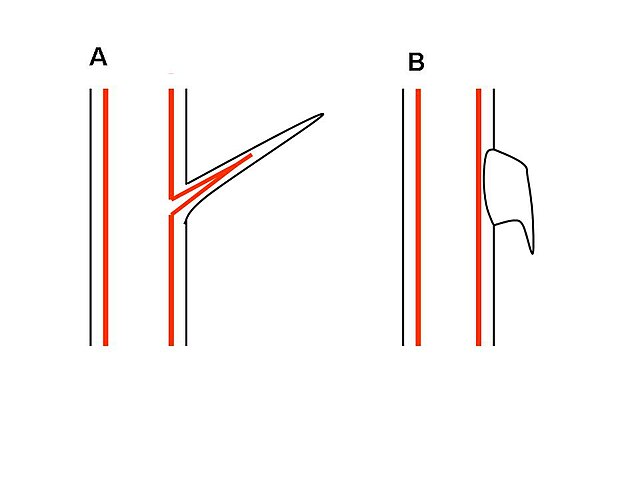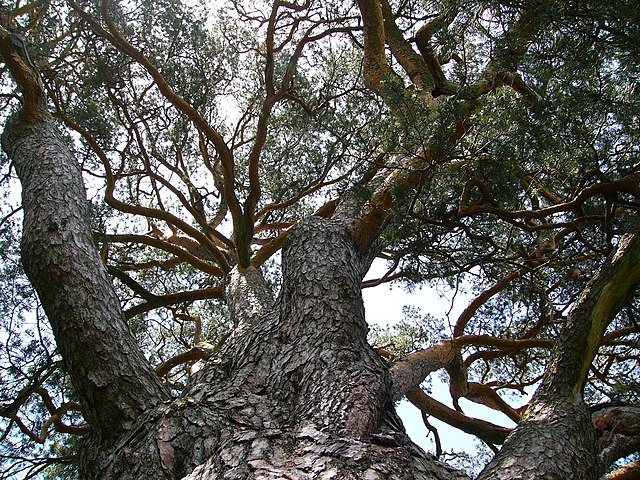Thorns, spines, and prickles
In plant morphology, thorns, spines, and prickles, and in general spinose structures, are hard, rigid extensions or modifications of leaves, roots, stems, or buds with sharp, stiff ends, and generally serve the same function: physically defending plants against herbivory.
Prickles on a blackberry branch
(A) Thorn or spine (B) Prickle
Smooth, featureless Citrus thorn.
Gymnosporia buxifolia thorn, its leaves, nodes, and emergence from an axillary bud demonstrating its nature as a branch.
Phytomorphology is the study of the physical form and external structure of plants. This is usually considered distinct from plant anatomy, which is the study of the internal structure of plants, especially at the microscopic level. Plant morphology is useful in the visual identification of plants. Recent studies in molecular biology started to investigate the molecular processes involved in determining the conservation and diversification of plant morphologies. In these studies transcriptome conservation patterns were found to mark crucial ontogenetic transitions during the plant life cycle which may result in evolutionary constraints limiting diversification.
Inflorescences emerging from protective coverings
Asclepias syriaca showing complex morphology of the flowers.
Looking up into the branch structure of a Pinus sylvestris tree
Variation in leaves from the giant ragweed illustrating positional effects. The lobed leaves come from the base of the plant, while the unlobed leaves come from the top of the plant.








